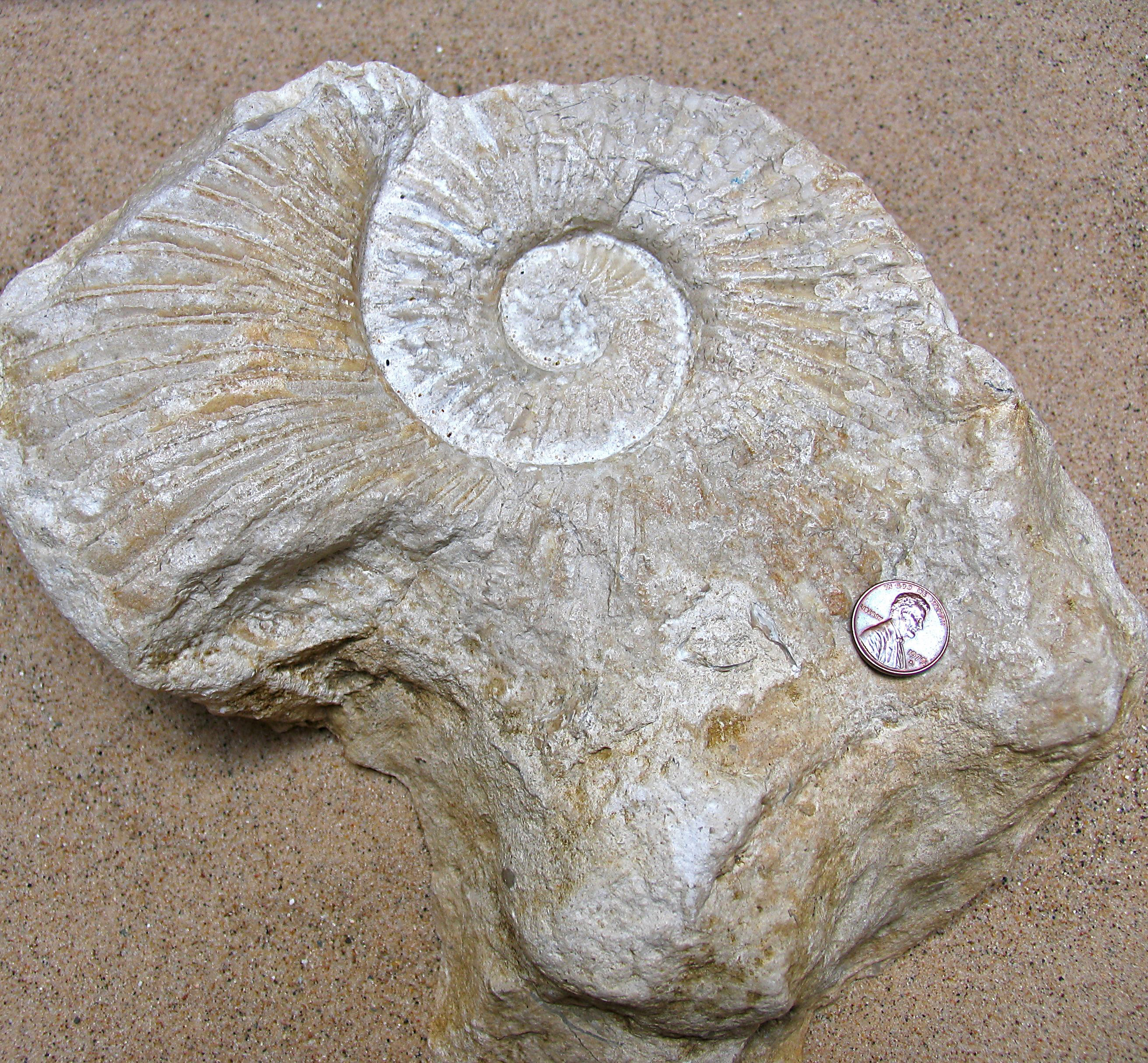
Manuicera sp. lived in the ancient seas when dinosaurs were around. In general, the ammonite’s plethora peaked during the Cretaceous Period (145 to 66 million-years-ago). But according to the fossil records, their incredible long history began as early as 440 mya during the Silurian Period.
Manuicera sp ammonite was unearthed from a dried up riverbed in Arkansas, they have also been unearthed in Texas. Both of these U.S. states lie within the limestone, Goodland Formation where many other Cretaceous fossils have been discovered. Originally, I mistakenly identified the fossil as, Dufrenoy justinae, but that was when I was newer to the field with a less discerning eye and research skills. So there you go.

The amazing illustration above shows how ammonites vary greatly in the ornamentation (surface relief) of their shells. Some may be smooth and relatively featureless, except for growth lines. In others, various patterns of spiral ridges and ribs or even spines are shown.
Ammonite fossils have a world wide distribution indicating the theory of continental drift and due to their abundance (estimated 10 thousand species) scientists use them as date markers for other fossils along the same rock layers.
Some varieties grew to gargantuan sizes, larger than semitruck tires. You can see this in a photo from another article I have written, (scroll to bottom).
CLASSIFICATION
Scientific Name: Manuiceras sp. Common Name: Ammonite
Kingdom: Animalia
Phylum: Mollusk (soft body of invertebrate animal encased in shell)
Class: Cephalopod (means prominent head and tentacles, i.e. octopus, squid, cuttlefish, nautilus)
Order: Ammonitida (characterized by thick ribbed and patterned shells)
Family: Acanthoceratidae (possibly)
Genus: Manuiceras
